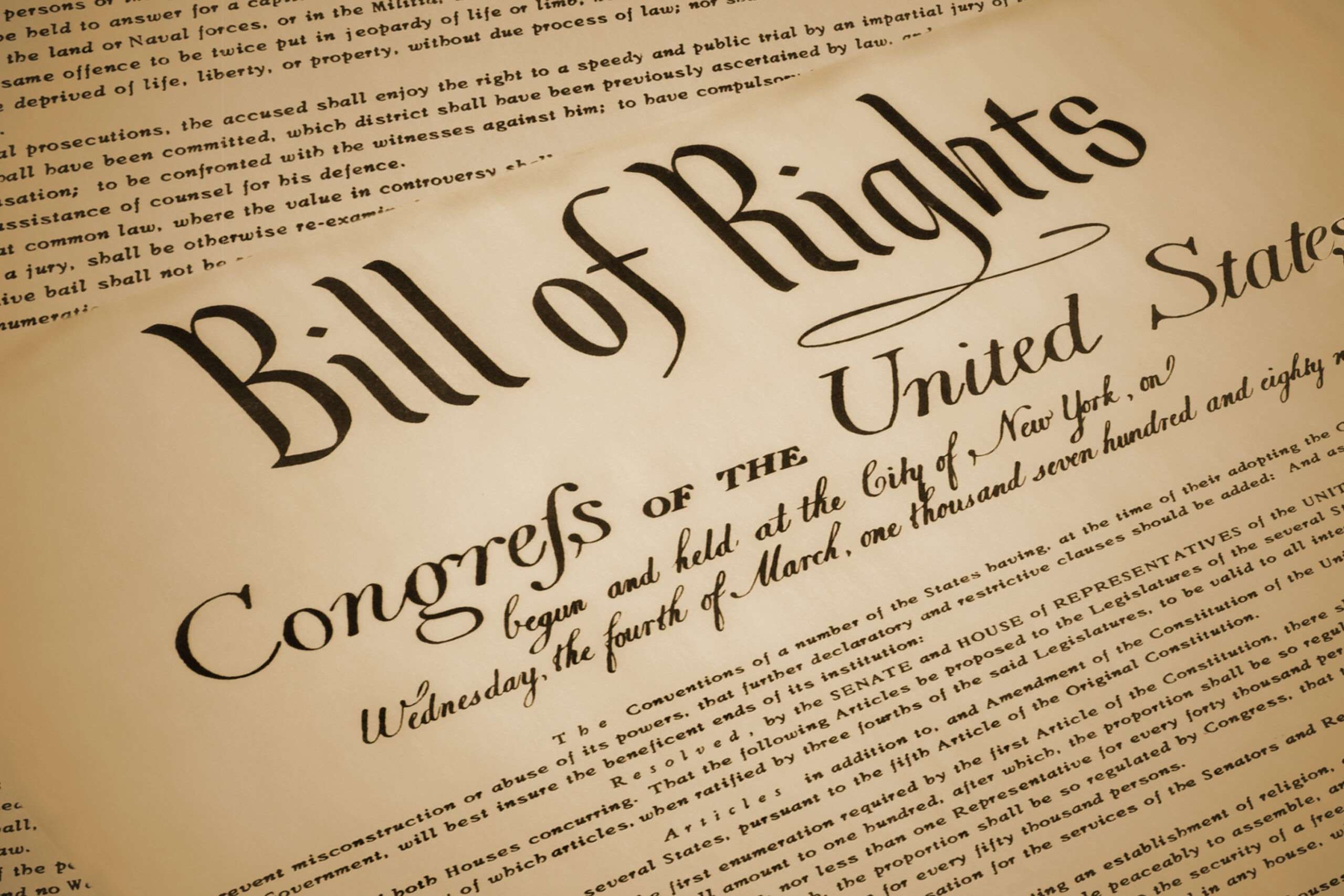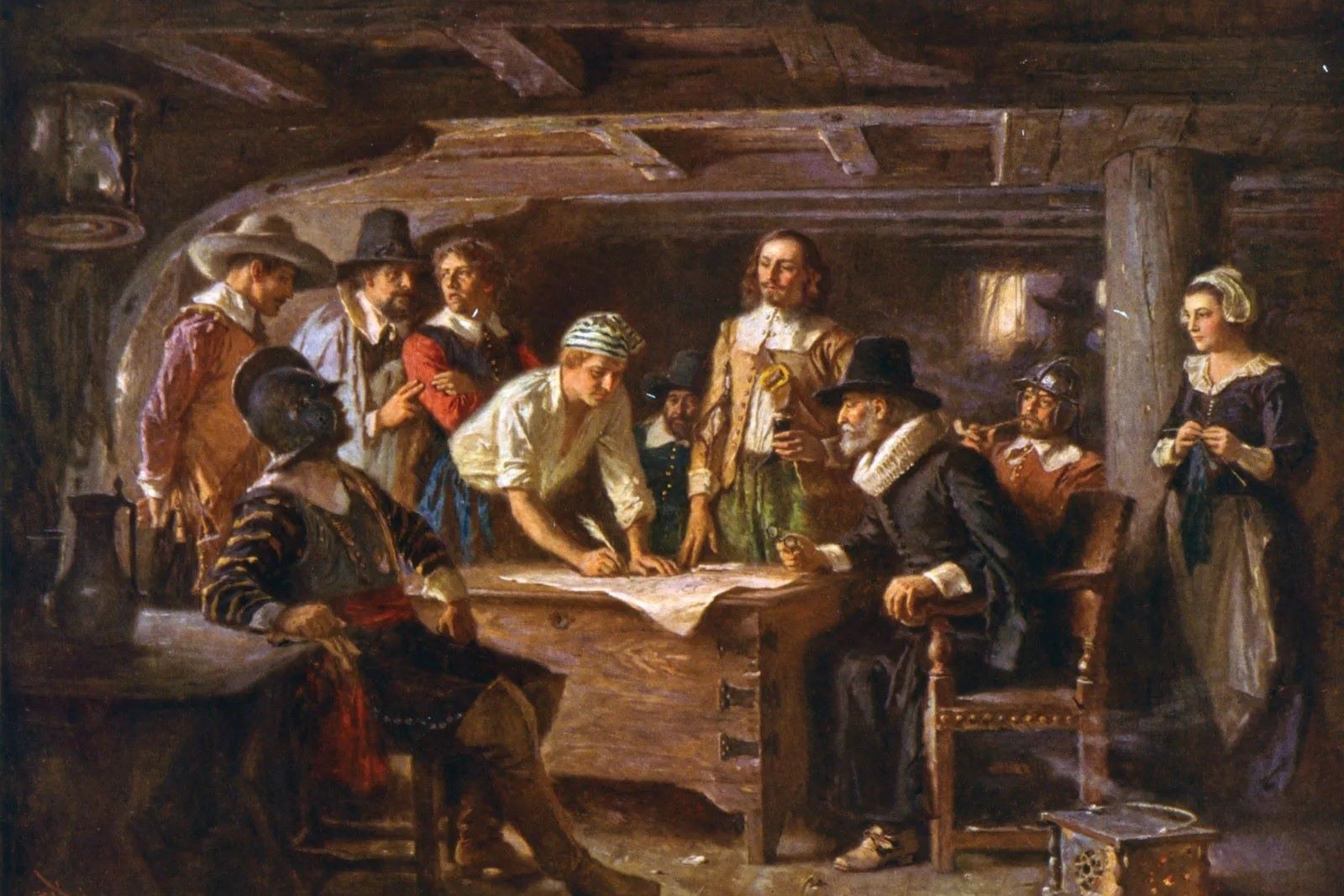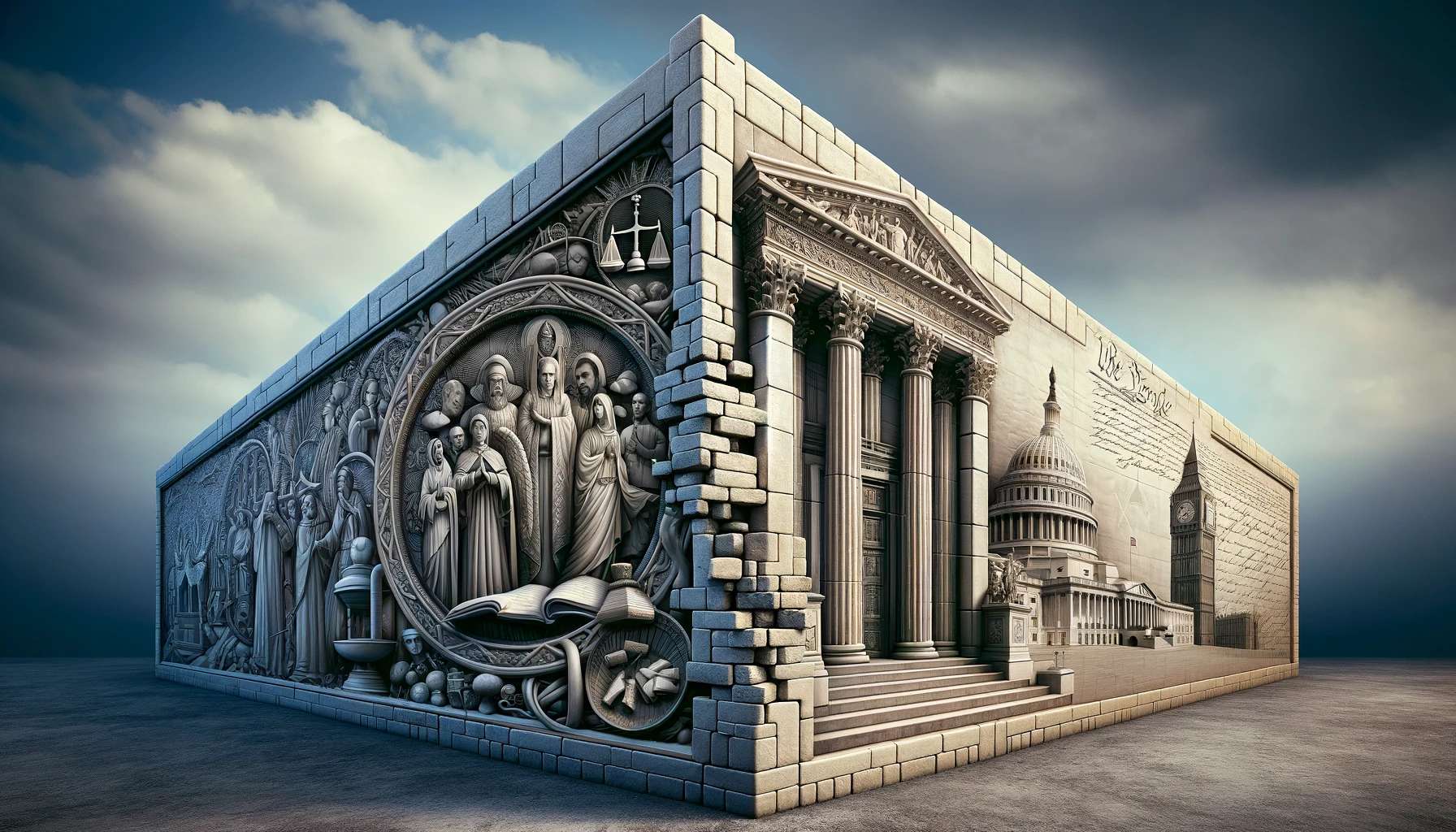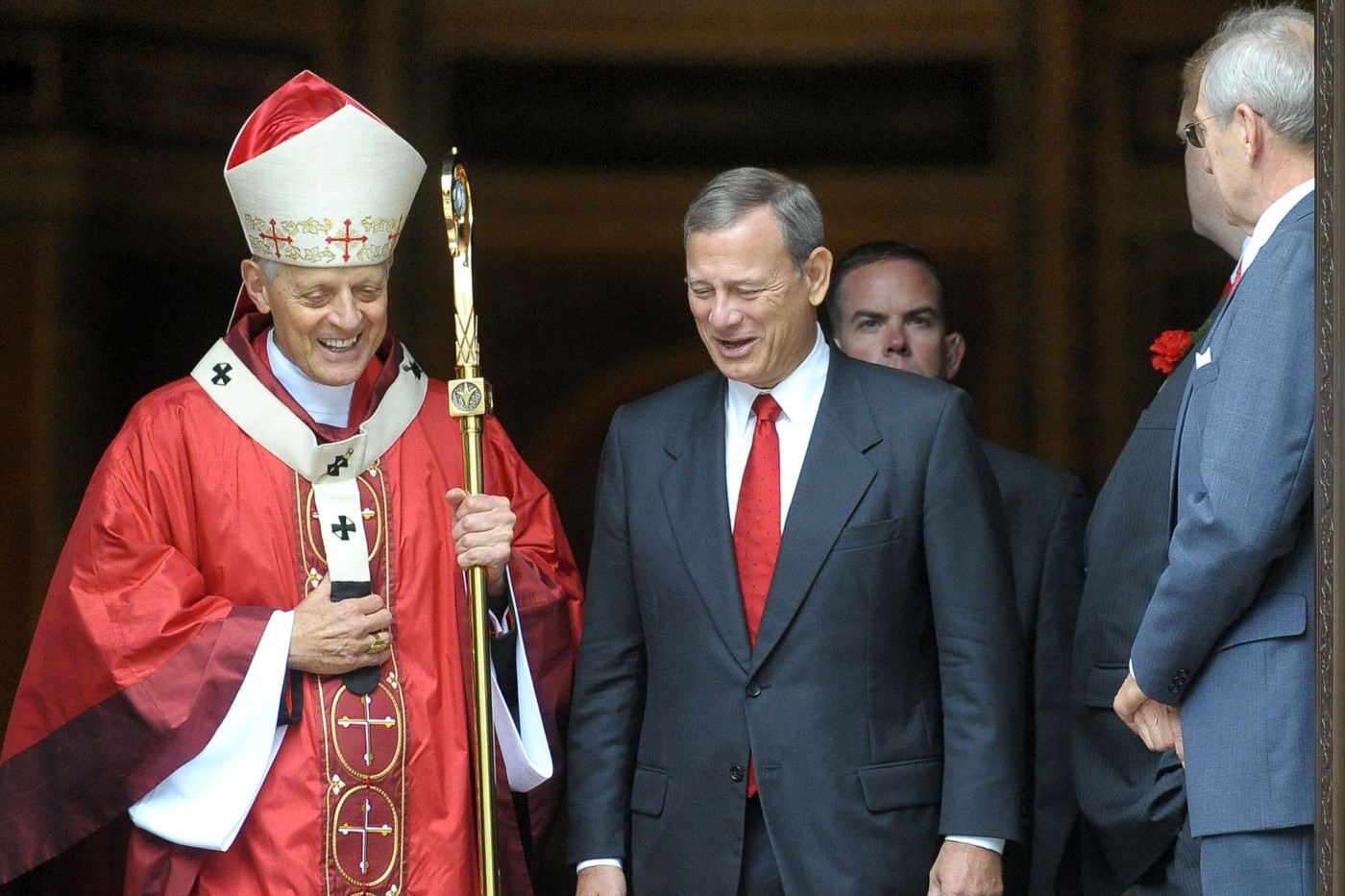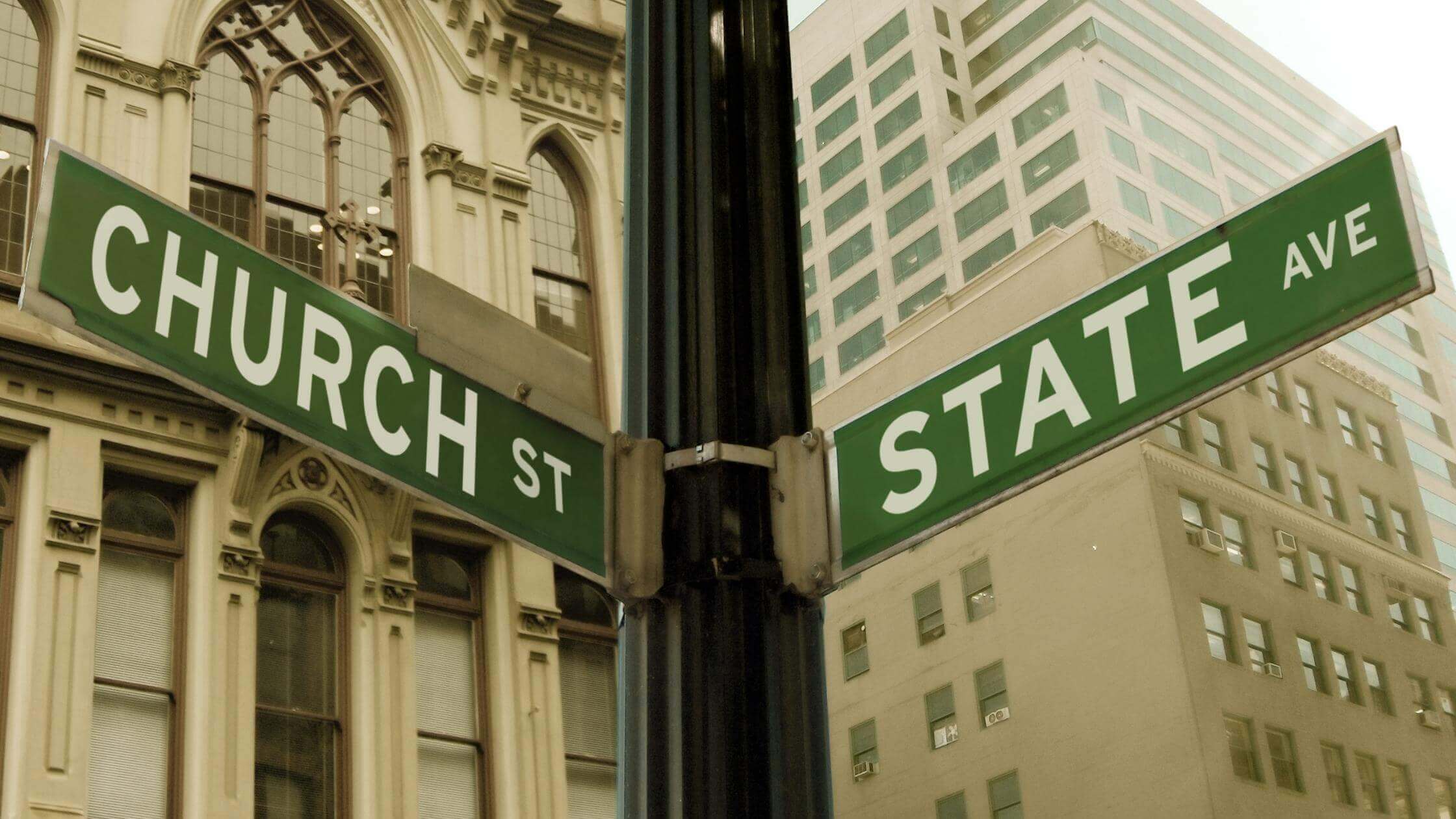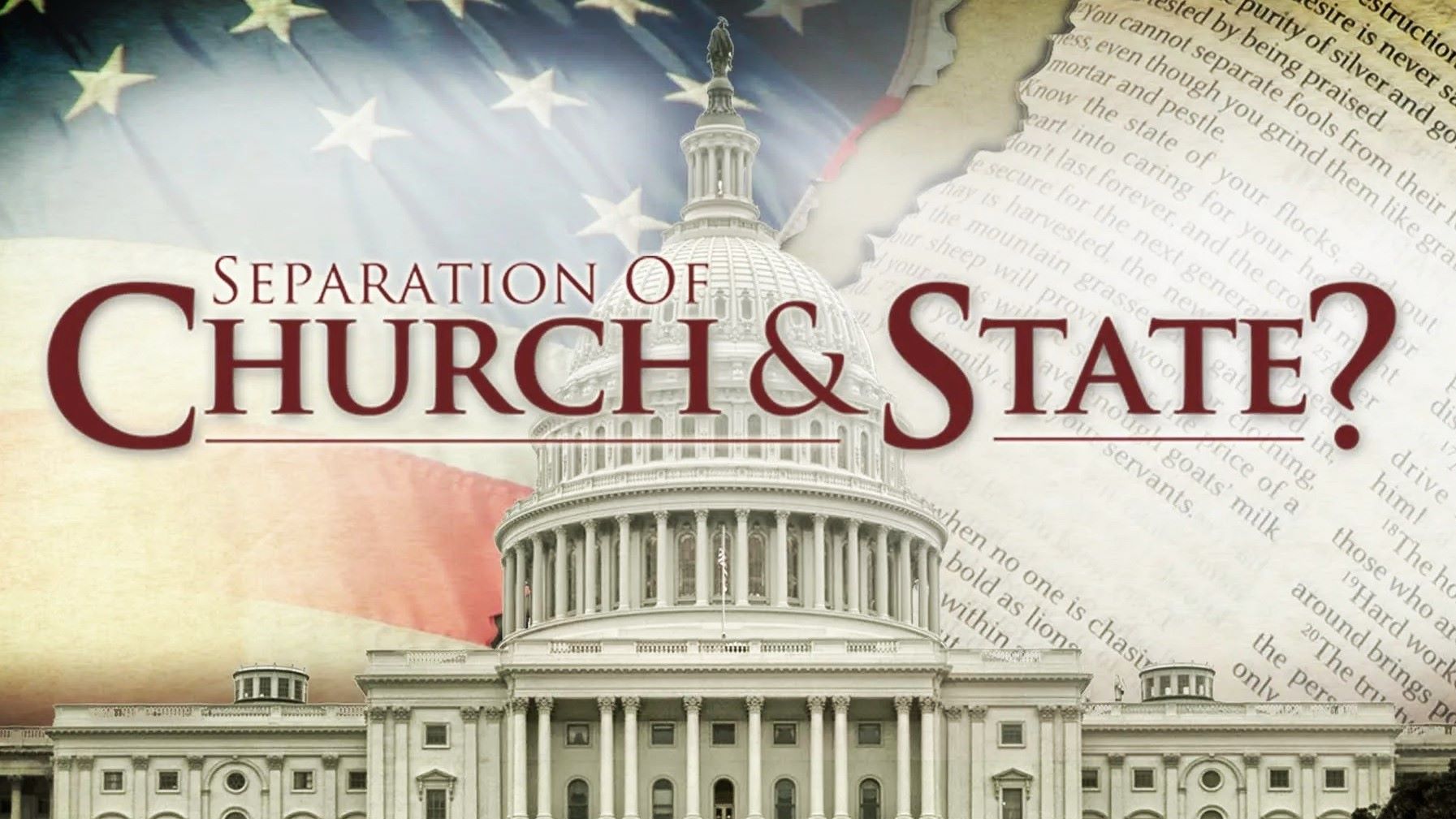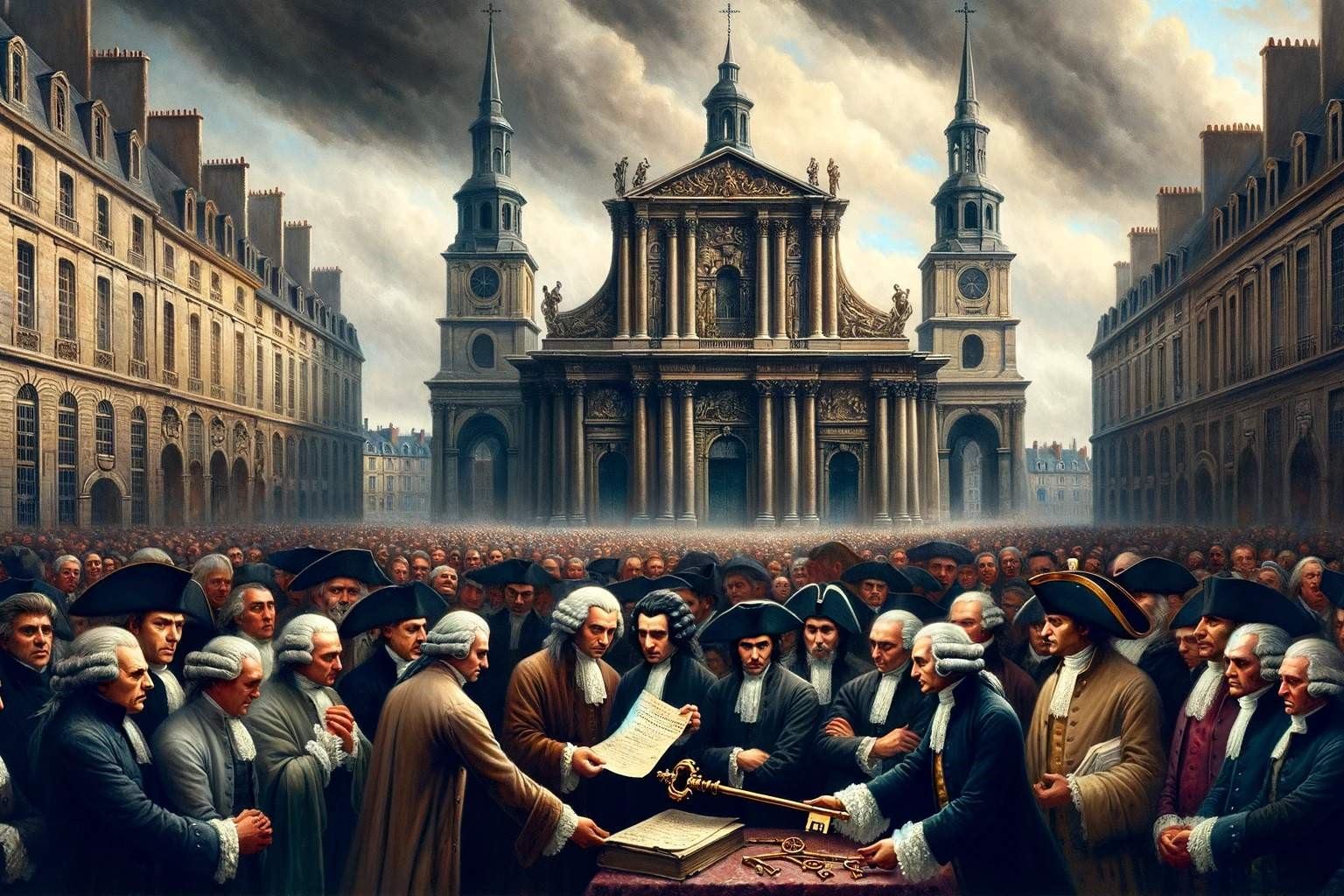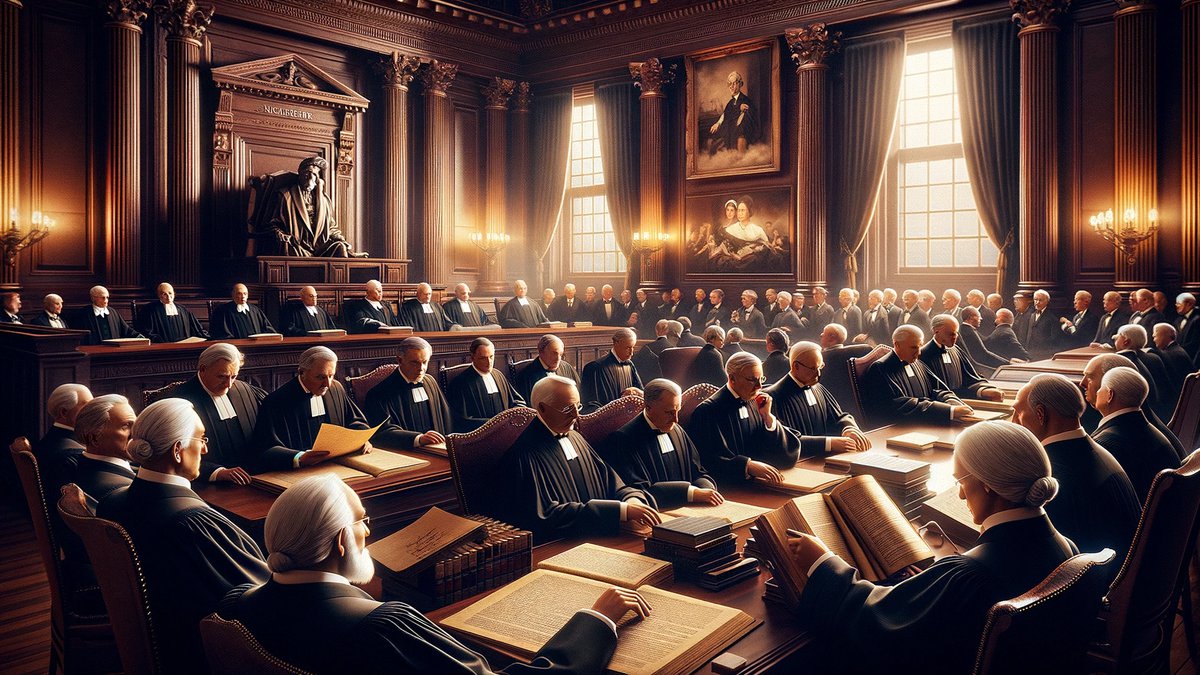Home>Theology and Spirituality>Which Clause Of The Constitution Is The Basis For The Separation Of Church And State
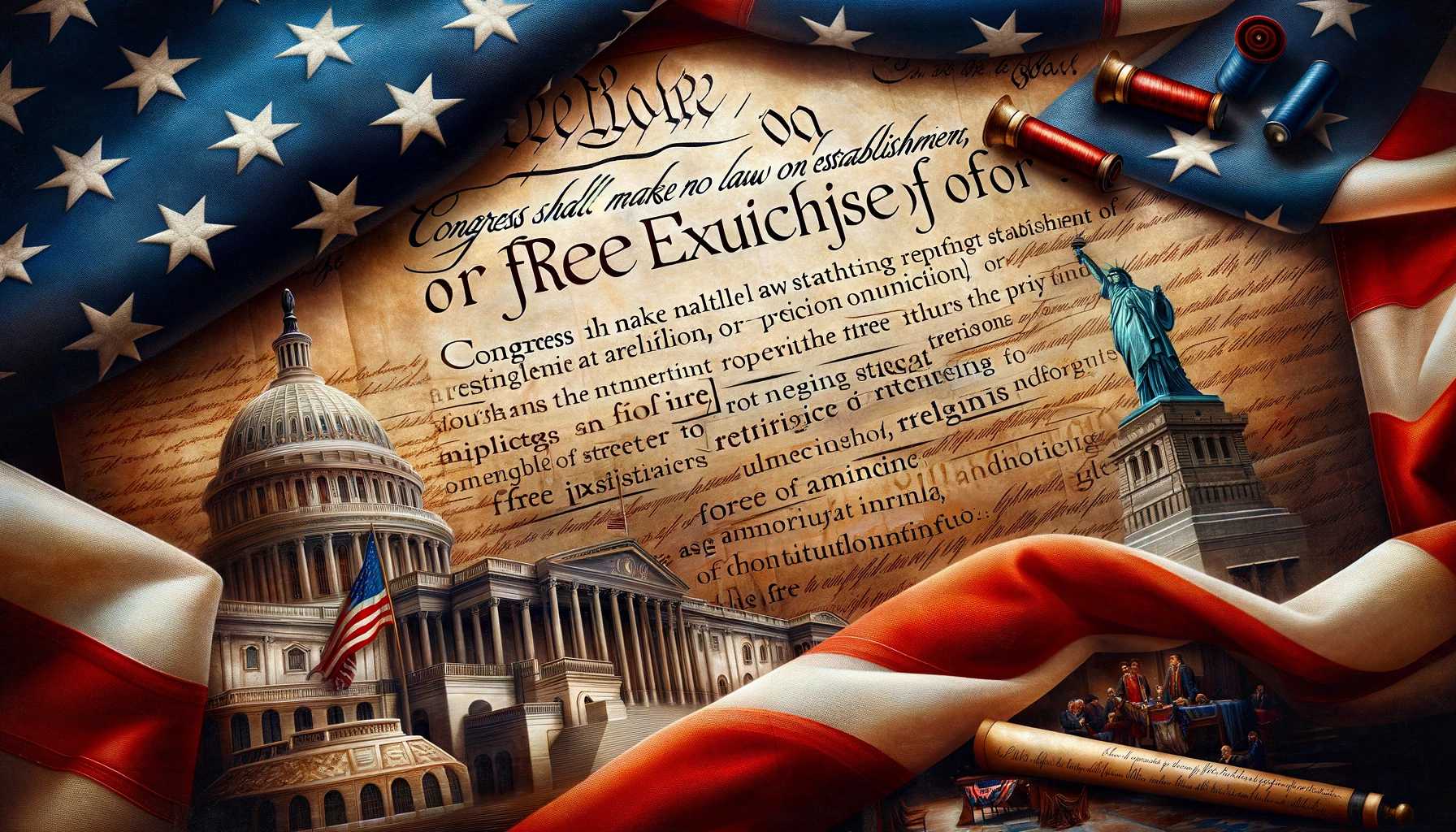

Theology and Spirituality
Which Clause Of The Constitution Is The Basis For The Separation Of Church And State
Published: February 11, 2024
Jason DeRose, Managing Editor at Christian.net, uses his expertise in religion and journalism to deepen understanding of faith's societal impacts. His editorial leadership, coupled with a strong academic background, enriches the platform’s diverse content, earning him recognition in both journalism and religious circles.
Learn about the constitutional basis for the separation of church and state and its implications for theology and spirituality. Understand the clause that shapes this fundamental aspect of governance.
(Many of the links in this article redirect to a specific reviewed product. Your purchase of these products through affiliate links helps to generate commission for Christian.net, at no extra cost. Learn more)
Table of Contents
Introduction
The separation of church and state is a fundamental principle that has shaped the legal and cultural landscape of the United States. Rooted in the First Amendment of the U.S. Constitution, this concept serves as a cornerstone of religious freedom and governmental neutrality. The First Amendment's religion clauses, namely the Establishment Clause and the Free Exercise Clause, form the basis for this crucial separation, ensuring that the government neither establishes a state religion nor interferes with individuals' religious practices.
The historical context of the separation of church and state can be traced back to the early days of American colonization, where religious persecution and state-sponsored religion were prevalent in Europe. The framers of the Constitution sought to safeguard against such coercion and promote religious pluralism by enshrining the principles of religious freedom and secular governance.
The Establishment Clause and the Free Exercise Clause, collectively known as the religion clauses, were designed to address these concerns. The Establishment Clause prohibits the government from endorsing or promoting a specific religion, while the Free Exercise Clause safeguards individuals' rights to practice their chosen faith without governmental interference.
These clauses have been the subject of extensive legal interpretation and have given rise to landmark Supreme Court decisions that have shaped the boundaries of religious expression and government involvement in religious matters. The evolving interpretations of these clauses continue to influence contemporary debates and controversies surrounding issues such as prayer in public schools, religious displays on government property, and exemptions from generally applicable laws based on religious beliefs.
In this article, we will delve into the nuances of the Establishment Clause and the Free Exercise Clause, explore key Supreme Court interpretations, and examine the current debates and controversies that underscore the ongoing relevance of the separation of church and state in American society. Through this exploration, we aim to provide a comprehensive understanding of the constitutional principles that underpin the delicate balance between religious liberty and governmental authority.
The Establishment Clause
The Establishment Clause, a pivotal component of the First Amendment, serves as a bulwark against the establishment of a state religion and the favoritism of one religious denomination over others by the government. It is succinctly articulated as "Congress shall make no law respecting an establishment of religion" and forms the bedrock of the separation of church and state in the United States.
The historical backdrop of the Establishment Clause can be traced to the Founding Fathers' commitment to religious freedom and their desire to prevent the replication of the religious persecution and state-sponsored religion prevalent in Europe. This constitutional provision was intended to ensure that the government remains neutral in matters of religion, thereby safeguarding the rights of individuals to practice their faith without facing coercion or discrimination from the state.
The interpretation of the Establishment Clause has been the subject of numerous landmark Supreme Court cases, each contributing to the delineation of the boundaries between government and religion. These cases have established a framework for evaluating laws and government actions to ascertain whether they violate the Establishment Clause, thereby shaping the legal landscape surrounding religious freedom and governmental neutrality.
The application of the Establishment Clause has given rise to debates and controversies concerning issues such as the display of religious symbols on public property, prayer in public schools, and the allocation of government funds to religious institutions. These contentious matters underscore the ongoing relevance and significance of the Establishment Clause in contemporary society, as courts continue to grapple with the complexities of maintaining a secular government while respecting the diverse religious landscape of the nation.
In essence, the Establishment Clause stands as a testament to the framers' commitment to religious liberty and the principle of governmental neutrality in matters of faith. Its enduring influence continues to shape legal precedents and guide the delicate balance between religious autonomy and state authority, reflecting the enduring significance of the separation of church and state in American jurisprudence.
The Free Exercise Clause
The Free Exercise Clause, a cornerstone of the First Amendment, embodies the principle that individuals have the right to practice their chosen religion without governmental interference. It states that "Congress shall make no law respecting an establishment of religion, or prohibiting the free exercise thereof," thereby safeguarding the freedom of individuals to worship and observe their faith without fear of persecution or restriction by the government.
The historical context of the Free Exercise Clause is rooted in the framers' commitment to protecting religious autonomy and ensuring that individuals are free to follow their beliefs without facing governmental impediments. This constitutional provision was a response to the religious persecution and coercion that had plagued Europe, and it aimed to establish a framework for religious freedom in the newly formed United States.
The interpretation of the Free Exercise Clause has been the subject of significant legal scrutiny, leading to landmark Supreme Court decisions that have delineated the boundaries of religious liberty and governmental authority. These decisions have established a framework for evaluating laws and government actions to determine whether they infringe upon individuals' rights to freely exercise their religion, thereby shaping the legal landscape surrounding religious freedom and governmental neutrality.
The application of the Free Exercise Clause has given rise to debates and controversies surrounding issues such as the accommodation of religious practices in the public sphere, exemptions from generally applicable laws based on religious beliefs, and the extent to which individuals can assert their religious convictions in various contexts. These contentious matters underscore the ongoing relevance and significance of the Free Exercise Clause in contemporary society, as courts continue to grapple with the complexities of balancing religious autonomy with the state's interest in regulating conduct for the common good.
In essence, the Free Exercise Clause stands as a testament to the framers' commitment to upholding religious freedom and ensuring that individuals are free to practice their faith without governmental interference. Its enduring influence continues to shape legal precedents and guide the delicate balance between religious autonomy and state authority, reflecting the enduring significance of the separation of church and state in American jurisprudence.
Supreme Court Interpretations
The Supreme Court of the United States has played a pivotal role in shaping the interpretation and application of the Establishment Clause and the Free Exercise Clause, offering nuanced perspectives on the delicate balance between religious freedom and governmental authority. Through landmark decisions, the Court has elucidated the boundaries of permissible government involvement in religious matters and has established legal precedents that continue to influence contemporary debates and controversies.
One of the seminal cases that significantly impacted the interpretation of the Establishment Clause is Lemon v. Kurtzman (1971). In this case, the Court articulated the "Lemon test," a three-pronged standard for evaluating whether a law or government action violates the Establishment Clause. The test requires that the law must have a secular purpose, its primary effect must neither advance nor inhibit religion, and it must not result in excessive entanglement between government and religion. This test has been instrumental in guiding courts in determining the constitutionality of various government actions concerning religion.
Furthermore, the Supreme Court's decision in Employment Division v. Smith (1990) marked a pivotal moment in the interpretation of the Free Exercise Clause. The Court held that neutral and generally applicable laws could be applied to religious practices without violating the Free Exercise Clause, even if such application burdened the exercise of religion. This decision established a framework for evaluating claims of religious exemptions from generally applicable laws, shaping the legal landscape surrounding religious freedom and governmental regulation.
Additionally, the Supreme Court's ruling in Burwell v. Hobby Lobby Stores, Inc. (2014) addressed the intersection of religious freedom and government mandates, particularly concerning the Affordable Care Act's contraceptive coverage requirement. The Court held that closely held corporations could assert religious objections to certain regulations, thereby expanding the scope of religious liberty protections in the context of corporate entities.
These landmark decisions, among others, reflect the Supreme Court's ongoing engagement with the complexities of religious freedom and governmental neutrality. The Court's interpretations have provided guidance on the permissible boundaries of government involvement in religious matters, offering a framework for evaluating laws and government actions to ensure compliance with the First Amendment's religion clauses.
The evolving nature of Supreme Court interpretations underscores the enduring relevance of the Establishment Clause and the Free Exercise Clause in shaping the legal landscape of religious freedom and governmental authority. As the Court continues to grapple with novel issues and societal changes, its interpretations serve as a cornerstone for navigating the intricate relationship between religion and the state in American jurisprudence.
Current Debates and Controversies
The intersection of religion and government continues to fuel contemporary debates and controversies, reflecting the ongoing relevance and complexity of the separation of church and state in American society. One of the prominent areas of contention revolves around the display of religious symbols on public property. This issue has sparked heated discussions and legal battles, with divergent perspectives on the constitutionality of religious displays in government-owned spaces. The debate often centers on whether such displays constitute an endorsement of a particular religion by the government, thus implicating the Establishment Clause.
Another contentious issue pertains to prayer in public schools, where the delicate balance between religious expression and governmental neutrality is frequently tested. Debates surrounding prayer in educational settings raise questions about the extent to which religious activities can be accommodated within the public school environment without infringing upon the rights of students from diverse religious backgrounds. These discussions underscore the complexities of reconciling religious freedom with the principles of secular governance in the context of public education.
Moreover, the accommodation of religious practices in the public sphere has emerged as a subject of intense debate, particularly concerning exemptions from generally applicable laws based on religious beliefs. This issue has garnered significant attention in the context of nondiscrimination laws and regulations, as individuals and organizations assert religious objections to certain requirements, prompting legal and ethical deliberations about the scope of religious exemptions and their implications for societal inclusivity and equality.
The ongoing debates and controversies surrounding the separation of church and state also encompass the allocation of government funds to religious institutions. Disputes arise over the permissibility of using public funds to support religious organizations and activities, raising intricate questions about the boundaries between governmental support for religious initiatives and the prohibition of state-sponsored religion enshrined in the Establishment Clause.
Furthermore, the evolving landscape of technology and social media has introduced novel dimensions to the debates surrounding the separation of church and state, particularly in the context of online religious expression and its interaction with governmental regulations and policies. The digital sphere presents unique challenges and opportunities in navigating the boundaries between religious autonomy and governmental oversight, prompting discussions about the application of constitutional principles to virtual platforms.
These contemporary debates and controversies underscore the dynamic and multifaceted nature of the separation of church and state, reflecting the ongoing evolution of societal norms, legal interpretations, and cultural dynamics. As these issues continue to unfold, they contribute to the rich tapestry of constitutional discourse and legal deliberations, shaping the contours of religious freedom and governmental authority in the modern era.
Conclusion
In conclusion, the separation of church and state, anchored in the Establishment Clause and the Free Exercise Clause of the First Amendment, stands as a testament to the framers' commitment to religious freedom and governmental neutrality. These constitutional provisions have served as the bedrock of a robust framework that safeguards individuals' rights to practice their chosen faith without facing coercion or discrimination from the government. The historical context of religious persecution and state-sponsored religion in Europe informed the framers' resolve to establish a nation where religious pluralism thrives, and where the government remains impartial in matters of faith.
The nuanced interpretations of the Establishment Clause and the Free Exercise Clause by the Supreme Court have delineated the boundaries of permissible government involvement in religious affairs, offering guidance on evaluating laws and government actions to ensure compliance with the First Amendment's religion clauses. Landmark decisions such as Lemon v. Kurtzman and Employment Division v. Smith have shaped the legal landscape surrounding religious freedom and governmental regulation, reflecting the ongoing engagement with the complexities of religious autonomy and state authority.
Contemporary debates and controversies surrounding the separation of church and state underscore the enduring relevance and complexity of this constitutional principle. Issues such as the display of religious symbols on public property, prayer in public schools, accommodation of religious practices in the public sphere, allocation of government funds to religious institutions, and the intersection of technology and online religious expression continue to shape the discourse on religious freedom and governmental neutrality.
As the United States continues to evolve, these debates and legal deliberations contribute to the rich tapestry of constitutional discourse, reflecting the dynamic interplay between religious liberty, governmental authority, and societal norms. The enduring significance of the separation of church and state in American jurisprudence underscores its pivotal role in navigating the intricate relationship between religion and the state, ensuring that the principles of religious freedom and governmental neutrality remain steadfast in the fabric of the nation's governance.
Ultimately, the separation of church and state stands as a cornerstone of American democracy, embodying the enduring commitment to fostering a society where individuals are free to practice their faith without governmental interference, and where the government remains neutral in matters of religion. This constitutional principle continues to shape the nation's legal landscape, serving as a beacon of religious liberty and a testament to the enduring legacy of the framers' vision for a nation that upholds the principles of freedom, equality, and pluralism.
